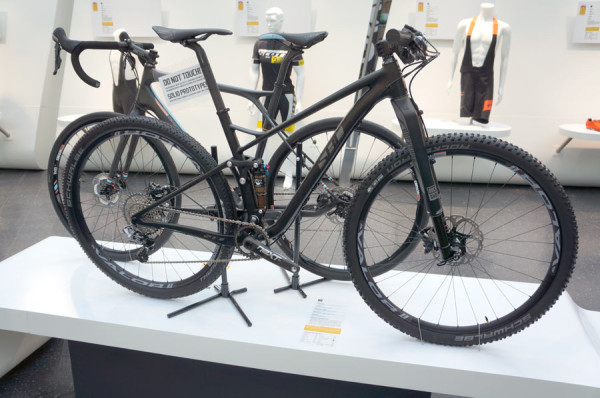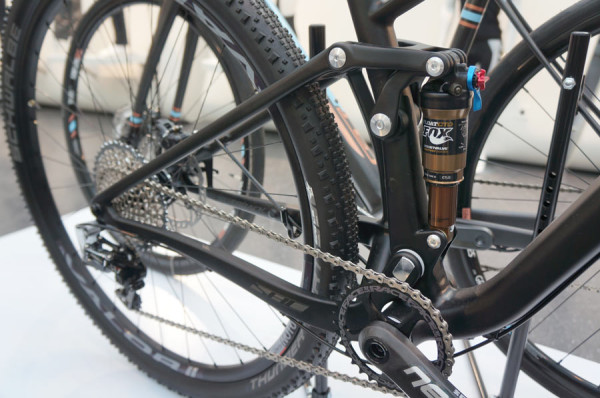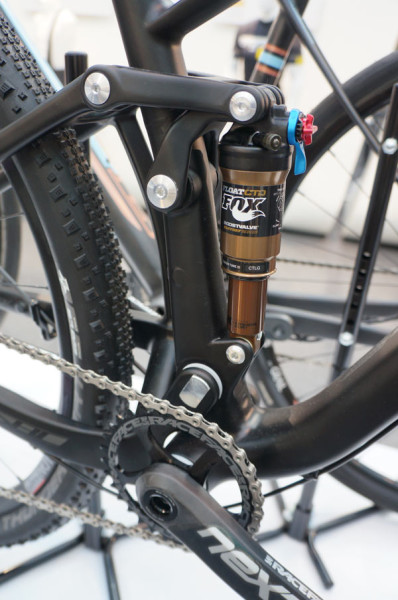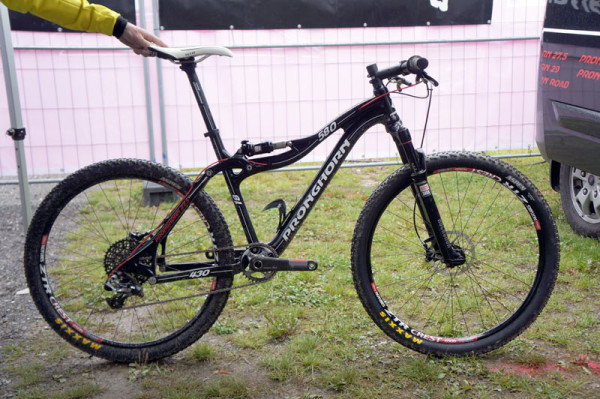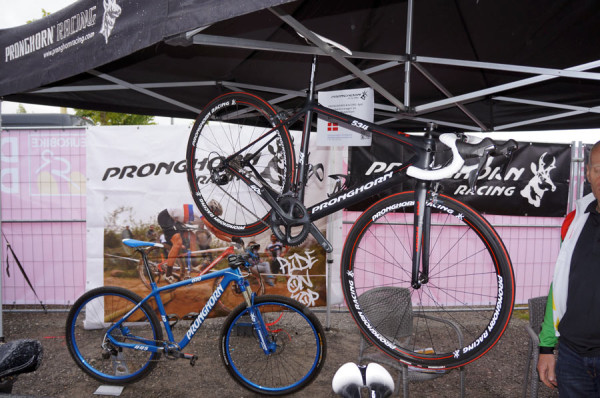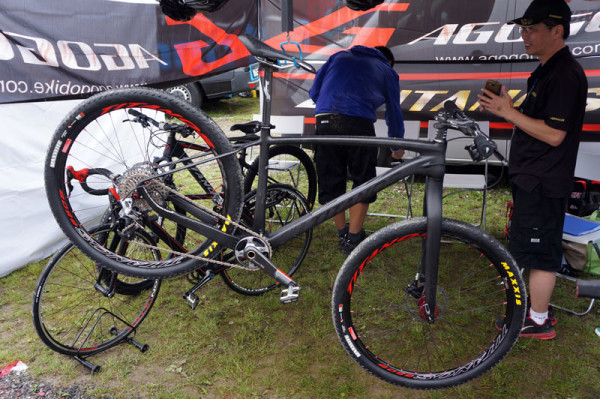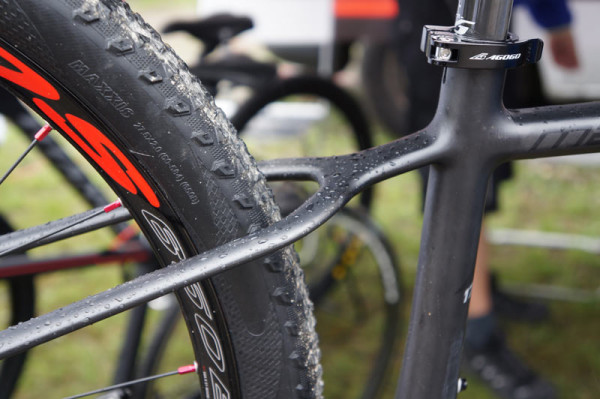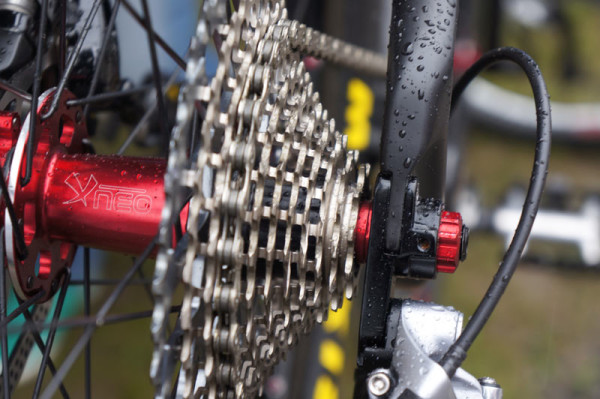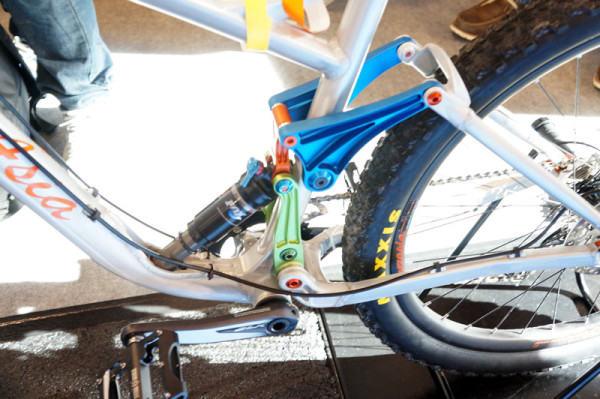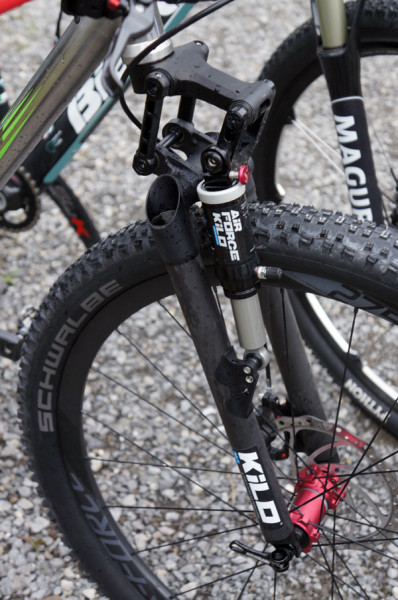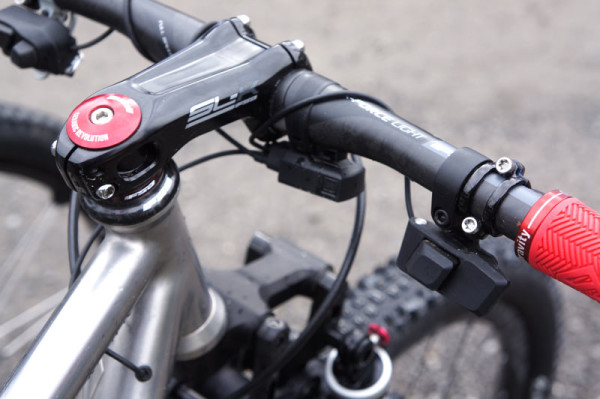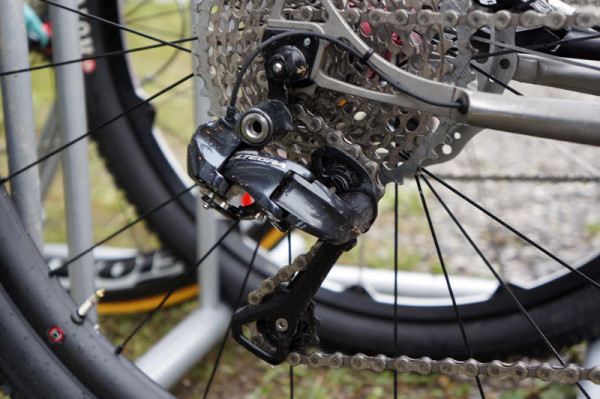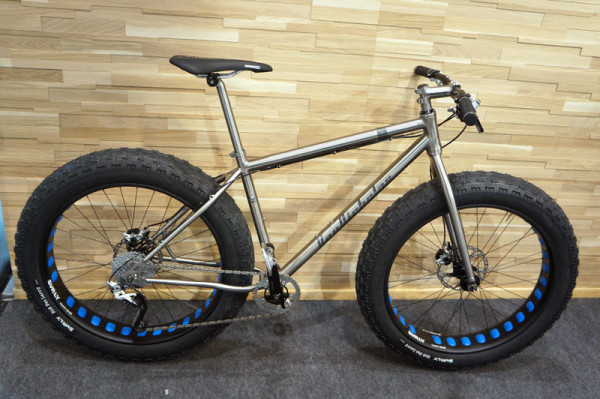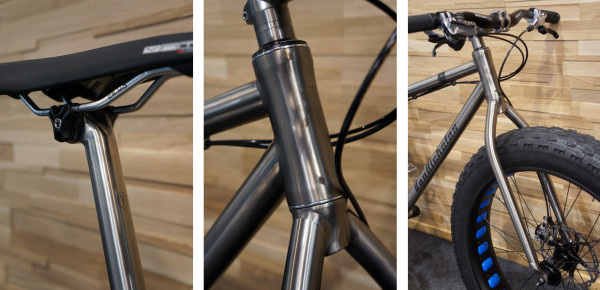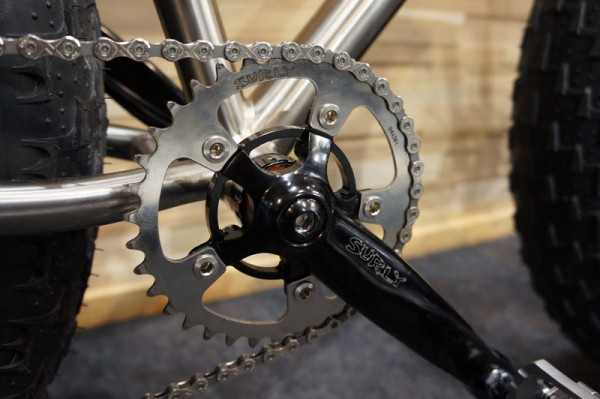Outside the exhibit halls were the award winners, among them Silverback’s SBC 29er full suspension race bike. Standing for “Superbike Concept”, it takes their technology to the brink to see what they can do. It’s not their only one, but this one caught our eye for the rather unique suspension design.
The closeups of that are after the break, but there’s more to it than that. The frame uses internal mandrels to help shape it and provide a strong enough base to layup longer strands of carbon. The result is a lighter, stronger and stiffer frame. The rear derailleur cable runs under the downtube in full length housing, and there’s room for a front mech’s cable, too, even though this one’s spec’d with a Race Face Next SL single ring crankset. There’s also a removable front derailleur mount, keeping things clean when you’re running a 1x.
Out back, a replaceable threaded insert fits 12×142 thru axles. On the left, a strut connects the seat- and chainstays to not only provide a rigid braking platform but also cool the rear brake. It’s angled, helping direct air over the rotor to blow heat away. Now, about that suspension…
Look closely.
Now look closer. Normally, when there’s a connecting beam from the chainstay to the seatstay, there’s also a lower linkage. Think Santa Cruz, Niner or Felt. The rear triangle is a solid piece, so it usually floats on the upper and lower linkages. Here, there’s no lower linkage. Normally, when that’s the case, the seatstays are not physically connected to the chainstays other than at the axle…or there’s a pivot near the axle (think FSR, Ellsworth, etc.). On bikes where there’s no pivot near the axle, the seatstays generally flex a bit to make up for the lack of a pivot (like the new Orbea Oiz).
What makes this concept so different is that there’s no pivot at the rear…and the connecting rod would basically prevent the seatstays from flexing. So, the entire rear triangle remains rigid, pivoting from the main pivot on the seat tube, positioned along the top of the chain. It drives the shock via an upper linkage, which is supported with an ancillary linkage to reduce lateral flex. It all comes together to provide 90mm of rear wheel travel, mated to a 100mm fork up front. The best part about this concept? It’s actually available, as shown and with a slightly lower level spec, too!
Back outside at the demo, Pronghorn Racing has added a 650B version of their full suspension race bike.
The Danish brand gets the most attention for their unique mountain bike designs, but they also do road, cyclocross and time trial bikes.
Agogo Bikes is mainly a private label manufacturer, so what better way to show off what you can do than with a slick looking bike? The Titanos 650B hardtail above has a few slick design notes:
A nice flat seatstay wishbone likely helps dissipate shock and vibrations, keeping your tail end fresher.
A sandwiched piece of carbon provides a stronger dropout, clamping onto the frame from both sides. A set screw lets you position the threaded axle nut to get the lever lined up properly on the other side.
Combining all of the above -weird linkages, Asian suppliers, etc.- was this colorful prototype showing off a different manufacturer’s capabilities.
Over at the FSA booth, this random bike was on hand. We couldn’t figure out if it was a demo bike, employee’s bike or just someone who happened to have a lot of new FSA components, but it had some rather interesting non-FSA parts. Like a German:A Kilo fork…
It also had a hacked together Di2 system. Up front are the Alfine thumb shifters…
…linked to an Ultegra rear derailleur and SRAM cassette. Pretty cool.
Van Nicholas is a Dutch titanium bicycle manufacturer that’s been doing road and mountain bikes for some time. Now, they can add ‘fat bike’ to the catalogue.
They make the fork, stem and seatpost, and it’s all equally gorgeous!
Surly crankset and chainring finish things off.
